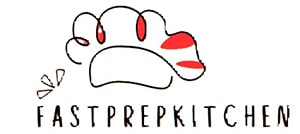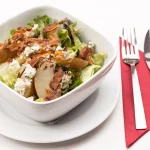The Best Fluffy Pancakes recipe you will fall in love with. Full of tips and tricks to help you make the best pancakes.
When it comes to nutritious, satisfying meals, bean salads are a top contender. Packed with plant-based protein, fiber, and essential nutrients, they’re a fantastic option for anyone looking to enjoy a healthy yet delicious dish. Whether you’re meal prepping for the week, searching for a flavorful side dish, or looking for a hearty vegetarian meal, bean salads offer endless possibilities.
What makes bean salads even more appealing is their versatility. From classic three-bean salads to Mediterranean-inspired mixes and spicy Southwest variations, there’s a combination to suit every taste. Plus, with the right ingredients and dressings, you can elevate a simple bean salad into a protein-packed powerhouse.
In this post, we’ll explore the best bean salad combinations, how to boost their protein content, the most flavorful dressings, and expert tips on storing and serving them for maximum freshness. Get ready to enjoy a meal that’s both wholesome and bursting with flavor!
Why Bean Salads Are a Great Protein-Packed Meal
Bean salads are not only delicious but also one of the best ways to enjoy a protein-rich, nutrient-dense meal. Whether you follow a plant-based diet or simply want to incorporate more wholesome foods into your routine, bean salads offer numerous benefits. Here’s why they make an excellent protein-packed meal:

1. High in Plant-Based Protein
Beans are one of the best sources of plant-based protein, making them a perfect choice for vegetarians, vegans, and anyone looking to reduce their meat consumption. Different types of beans offer varying amounts of protein per cup:
- Chickpeas (Garbanzo Beans): About 15g of protein per cup
- Black Beans: Around 15g of protein per cup
- Kidney Beans: Roughly 13g of protein per cup
- Lentils: About 18g of protein per cup
By mixing different beans in a salad, you can maximize your protein intake and create a well-balanced meal.
2. Rich in Fiber and Nutrients
In addition to being high in protein, beans are packed with fiber, which helps with digestion and keeps you full longer. The fiber in beans also supports gut health, regulates blood sugar levels, and promotes heart health. Plus, beans are loaded with essential vitamins and minerals, including:
- Iron – Helps transport oxygen in the blood and supports energy levels.
- Folate – Essential for cell growth and brain function.
- Magnesium – Aids in muscle function and relaxation.
- Potassium – Helps regulate blood pressure.
Combining beans with fresh vegetables, nuts, and seeds in a salad enhances their nutritional value even further.
3. Perfect for Meal Prep and Busy Lifestyles
One of the best things about bean salads is their convenience. They are easy to prepare in advance and store well in the refrigerator for several days. Here’s why they are ideal for meal prep:
- Long shelf life – Unlike leafy greens, beans don’t wilt quickly, so salads stay fresh longer.
- Minimal cooking required – Many beans can be used straight from a can or cooked in bulk for easy use throughout the week.
- Versatile and customizable – Bean salads can be made with different dressings and toppings to suit any taste preference.
4. Balanced and Satisfying Meals
A well-made bean salad provides the perfect balance of protein, healthy fats, fiber, and complex carbohydrates, making it a filling and satisfying meal. Unlike refined carbohydrates that cause quick energy crashes, the combination of beans, vegetables, and healthy fats (like olive oil or avocado) keeps you energized for hours.
Whether you enjoy bean salads as a main dish, side, or part of a wrap, they are a nutritious and delicious way to fuel your body with high-quality protein and essential nutrients.
Classic Bean Salad Combinations You’ll Love
Bean salads are incredibly versatile, and with the right combination of ingredients, they can be both satisfying and packed with flavor. Whether you prefer Mediterranean-inspired flavors, a Tex-Mex twist, or a traditional three-bean salad, these classic combinations are sure to become staples in your kitchen.
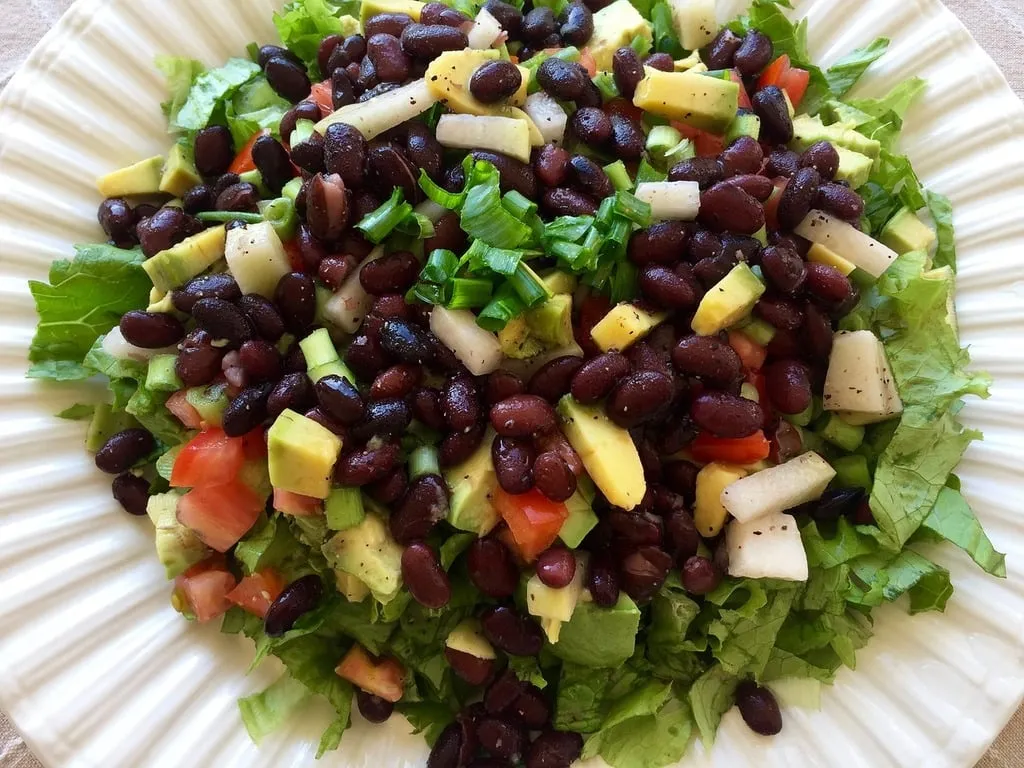
1. Mediterranean Chickpea Salad
This refreshing and protein-rich salad is inspired by Mediterranean flavors, making it a healthy and delicious choice. It’s loaded with fiber, protein, and heart-healthy fats.
Ingredients:
- 1 can (15 oz) chickpeas, drained and rinsed
- ½ cup diced cucumbers
- ½ cup cherry tomatoes, halved
- ¼ cup red onion, finely chopped
- ¼ cup crumbled feta cheese
- 2 tbsp extra virgin olive oil
- Juice of 1 lemon
- 1 tbsp fresh parsley or basil, chopped
- Salt and black pepper to taste
How to Make It:
- In a large bowl, combine the chickpeas, cucumbers, cherry tomatoes, red onion, and feta cheese.
- Drizzle with olive oil and lemon juice, then toss gently.
- Season with salt and black pepper. Add fresh parsley or basil for extra flavor.
- Serve immediately or refrigerate for up to 3 days for the flavors to meld.
Why You’ll Love It: This salad is light yet filling, packed with plant-based protein, and has a zesty, refreshing taste. It pairs well with grilled chicken, pita bread, or even quinoa for added nutrition.
2. Tex-Mex Black Bean Salad
If you love bold flavors and a little heat, this Tex-Mex-inspired black bean salad is perfect for you. It’s packed with protein, fiber, and fresh ingredients that bring a delicious Southwestern twist to your meal.
Ingredients:
- 1 can (15 oz) black beans, drained and rinsed
- ½ cup corn (fresh, frozen, or canned)
- ½ cup diced red bell pepper
- ¼ cup red onion, finely chopped
- ½ avocado, diced
- Juice of 1 lime
- 1 tbsp extra virgin olive oil
- ¼ tsp cumin
- ¼ tsp chili powder
- 2 tbsp chopped fresh cilantro
- Salt and black pepper to taste
How to Make It:
- In a mixing bowl, combine black beans, corn, red bell pepper, red onion, and avocado.
- In a separate small bowl, whisk together lime juice, olive oil, cumin, and chili powder.
- Drizzle the dressing over the salad and toss gently to combine.
- Sprinkle with chopped cilantro, season with salt and pepper, and serve chilled.
Why You’ll Love It: This salad is a great source of plant-based protein and fiber, and the Tex-Mex flavors make it a fun and flavorful dish. It’s perfect as a dip for tortilla chips, a topping for tacos, or a side dish for grilled meats.
3. Classic Three-Bean Salad
A timeless favorite, the three-bean salad is a great make-ahead dish that gets better as it sits. It combines the perfect balance of sweet, tangy, and savory flavors, making it a crowd-pleaser at picnics, barbecues, or family dinners.
Ingredients:
- 1 can (15 oz) kidney beans, drained and rinsed
- 1 can (15 oz) chickpeas, drained and rinsed
- 1 can (15 oz) green beans, drained
- ¼ cup red onion, finely chopped
- ¼ cup fresh parsley, chopped
- ¼ cup apple cider vinegar
- 2 tbsp olive oil
- 1 tbsp honey (or maple syrup for a vegan option)
- ½ tsp Dijon mustard
- Salt and black pepper to taste
How to Make It:
- In a large mixing bowl, combine the kidney beans, chickpeas, green beans, red onion, and parsley.
- In a small bowl, whisk together apple cider vinegar, olive oil, honey, Dijon mustard, salt, and pepper.
- Pour the dressing over the salad and toss to combine.
- Cover and refrigerate for at least an hour before serving to allow the flavors to blend.
Why You’ll Love It: This salad is a classic for a reason—it’s easy to make, packed with plant-based protein and fiber, and has a delightful balance of tangy and sweet flavors. It’s perfect as a side dish or a light main course.
4. Crunchy Chickpea and Nut Salad
For a delicious combination of textures and flavors, try this Lettuce, Cranberry, Nuts, and Chickpea Salad. The sweetness of cranberries, the crunch of nuts, and the heartiness of chickpeas create a perfectly balanced salad.
How to Boost Protein in Your Bean Salad
Bean salads are already packed with protein, thanks to their fiber-rich and nutrient-dense ingredients. However, if you want to take your salad to the next level—whether you’re an athlete, following a high-protein diet, or just looking for a more satisfying meal—there are plenty of ways to boost the protein content. Here’s how:
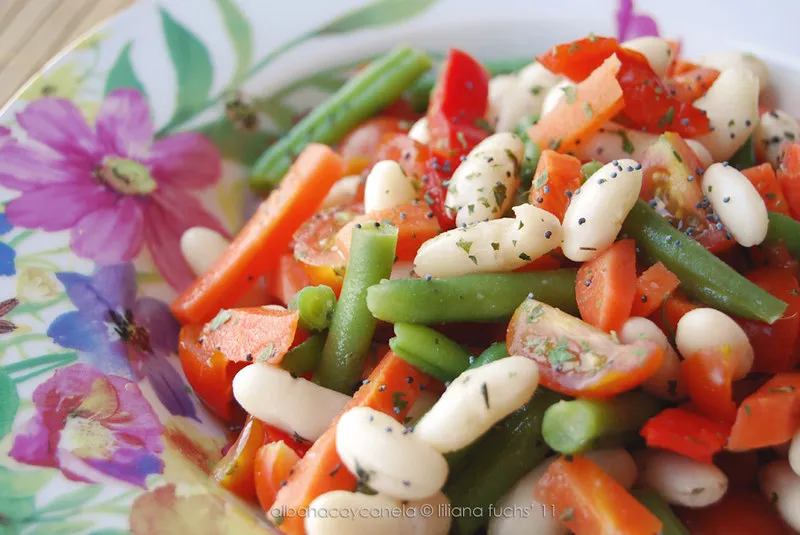
1. Add Protein-Packed Grains: Quinoa, Lentils, and Farro
While beans provide a good amount of protein on their own, pairing them with protein-rich grains can make your salad even more filling and nutritious.
- Quinoa – One of the best plant-based protein sources, quinoa contains all nine essential amino acids, making it a complete protein. It adds a light, fluffy texture to your bean salad while providing about 8g of protein per cooked cup.
- Lentils – These little legumes are incredibly high in protein, with about 18g of protein per cooked cup. They blend well with beans, adding both texture and heartiness.
- Farro – An ancient grain with a nutty flavor, farro provides 5-6g of protein per cooked cup and pairs well with Mediterranean-style bean salads.
How to Use Them: Cook your chosen grain and mix it into your bean salad for an extra protein boost. Try a chickpea and quinoa salad with a lemon vinaigrette for a light yet protein-rich dish.
2. Incorporate Nuts and Seeds for Crunch and Protein
Nuts and seeds not only add a satisfying crunch to your bean salad but also provide healthy fats and plant-based protein.
- Almonds – Sliced or chopped, almonds add 6g of protein per ounce and a nice crunch.
- Sunflower Seeds – With 5-6g of protein per ounce, sunflower seeds are a great addition, especially to Tex-Mex or Mediterranean-style salads.
- Pumpkin Seeds (Pepitas) – These small seeds are loaded with nutrients and contain about 7g of protein per ounce.
- Hemp Seeds – A superfood with 9-10g of protein per ounce, hemp seeds are a fantastic topping that won’t overpower your salad’s flavor.
How to Use Them: Sprinkle a handful of seeds or nuts over your salad before serving for added protein, crunch, and flavor.
3. Add Cheese or Dairy for an Extra Protein Kick
For those who eat dairy, cheese and yogurt-based dressings are a great way to increase protein while adding creamy, rich flavors.
- Feta Cheese – A popular addition to Mediterranean bean salads, feta provides 4g of protein per ounce and a tangy taste.
- Mozzarella Cheese – Mild and soft, mozzarella offers about 6g of protein per ounce.
- Cottage Cheese – Often overlooked in salads, cottage cheese has 13g of protein per ½ cup and works well in creamy bean salads.
- Greek Yogurt Dressing – Instead of using mayo, mix Greek yogurt with lemon juice and herbs to create a high-protein dressing with 10g of protein per cup.
How to Use Them: Crumble feta into a chickpea salad, add shredded mozzarella to a Tex-Mex bean salad, or make a Greek yogurt-based dressing for a creamy and protein-rich touch.
4. Include Lean Proteins Like Chicken, Tofu, or Eggs
If you’re not strictly plant-based, adding lean protein sources to your bean salad can make it even more satisfying.
- Grilled Chicken – With 26g of protein per 3 ounces, chicken pairs well with any bean salad, especially those with Mediterranean or Tex-Mex flavors.
- Hard-Boiled Eggs – Each egg provides about 6g of protein, making it a simple and easy way to boost your salad’s protein.
- Tofu or Tempeh – A great plant-based option, tofu has about 10g of protein per ½ cup, while tempeh provides even more at 15g per ½ cup.
- Tuna or Salmon – If you enjoy seafood, canned tuna or flaked salmon can easily be mixed into bean salads, adding 20g+ of protein per serving.
How to Use Them: Chop grilled chicken into bite-sized pieces, slice hard-boiled eggs on top of your salad, or toss in cubed tofu for a plant-based protein boost.
5. Use Protein-Rich Dressings and Toppings
The dressing and toppings you choose can also contribute to the protein content of your bean salad.
- Tahini Dressing – Made from sesame seeds, tahini is packed with protein and adds a creamy texture. A single tablespoon contains about 3g of protein.
- Nut Butter-Based Dressings – Peanut butter or almond butter blended with soy sauce, ginger, and garlic creates a delicious Asian-style dressing with 4g+ of protein per tablespoon.
- Nutritional Yeast – A vegan-friendly option, nutritional yeast provides a cheesy, umami flavor and contains 5g of protein per 2 tablespoons.
- Hummus – Made from chickpeas and tahini, hummus is a natural protein-booster with about 4g of protein per 2 tablespoons.
How to Use Them: Drizzle tahini dressing over a Mediterranean bean salad, toss a black bean salad with a peanut butter-based dressing, or sprinkle nutritional yeast over a warm lentil and bean salad.
If you’re following a plant-based diet and want to ensure you’re getting enough complete protein, check out this guide to complete proteins for vegans from Healthline.
Dressing and Flavor Enhancements for the Best Bean Salads
The secret to an irresistible bean salad lies in the dressing and flavor enhancers you use. A well-balanced dressing not only adds moisture and taste but also complements the natural flavors of the beans while tying all the ingredients together. From tangy vinaigrettes to creamy dressings and bold seasonings, here’s how you can elevate your bean salad to the next level.
1. Classic Vinaigrettes: Light, Tangy, and Refreshing
Vinaigrettes are a great choice for bean salads because they provide a bright and tangy contrast to the earthy flavors of the beans. They’re also easy to make and can be customized to fit different flavor profiles.
Popular Vinaigrettes for Bean Salads
- Lemon-Garlic Vinaigrette – Fresh lemon juice, minced garlic, olive oil, Dijon mustard, salt, and black pepper create a zesty and refreshing dressing.
- Apple Cider Vinegar Dressing – A mix of apple cider vinegar, honey, Dijon mustard, and olive oil enhances the natural sweetness of beans.
- Balsamic Vinaigrette – Balsamic vinegar, olive oil, a touch of honey, and garlic give bean salads a rich and slightly sweet depth.
- Red Wine Vinegar Dressing – A Mediterranean classic, this dressing combines red wine vinegar, olive oil, oregano, and a bit of minced shallot for a bold and herbaceous touch.
How to Use Them:
Whisk together the ingredients in a small bowl or shake them in a jar, then drizzle over your bean salad. Let the salad marinate for at least 30 minutes to allow the flavors to meld.
2. Creamy Dressings: Rich and Satisfying
For a heartier, more indulgent bean salad, creamy dressings add a smooth texture and bold flavor. These dressings work particularly well with hearty beans like chickpeas, black beans, and white beans.
Popular Creamy Dressings for Bean Salads
- Greek Yogurt Dressing – A healthy alternative to mayo-based dressings, Greek yogurt mixed with lemon juice, olive oil, and garlic creates a protein-packed, tangy dressing.
- Tahini Dressing – Made from ground sesame seeds, tahini has a nutty and slightly bitter flavor that pairs well with Mediterranean-style bean salads.
- Avocado-Lime Dressing – Blended avocado, lime juice, olive oil, and cilantro create a rich, creamy dressing with a bright citrus kick.
- Hummus-Based Dressing – Thinning out hummus with lemon juice and olive oil makes for a flavorful, protein-rich dressing that enhances the salad’s creaminess.
How to Use Them:
Blend or whisk the ingredients until smooth, then toss them into your bean salad. These dressings work particularly well when paired with fresh herbs and crunchy vegetables.
3. Herbs and Spices: Elevating Flavor with Freshness and Warmth
Fresh herbs and spices can transform a simple bean salad into a flavor-packed dish. Whether you prefer bold, smoky, or refreshing flavors, there’s an herb or spice to match your taste.
Best Herbs for Bean Salads
- Cilantro – Bright and slightly citrusy, cilantro pairs beautifully with black beans and Tex-Mex-style salads.
- Parsley – Adds a fresh, grassy taste that complements Mediterranean and Middle Eastern-inspired salads.
- Basil – Works well in Italian-style bean salads, adding a sweet and slightly peppery flavor.
- Mint – Refreshing and aromatic, mint pairs well with chickpeas and Mediterranean flavors.
Best Spices for Bean Salads
- Cumin – Adds a smoky, earthy flavor, perfect for Mexican and Middle Eastern-style bean salads.
- Smoked Paprika – Gives salads a deep, slightly sweet smokiness.
- Chili Powder – Adds warmth and spice, great for Tex-Mex-style bean salads.
- Curry Powder – Works well with chickpeas and lentils, adding a warm, aromatic depth.
How to Use Them:
Chop fresh herbs finely and sprinkle them over your salad. For spices, mix them into the dressing or sprinkle them directly over the salad before tossing.
4. Acidic Enhancers: Brightening the Flavors
Acidic ingredients bring out the natural flavors of beans and balance the richness of other components.
Best Acidic Ingredients for Bean Salads
- Fresh Lemon or Lime Juice – Adds brightness and freshness, cutting through the heaviness of the beans.
- Vinegar (Apple Cider, Red Wine, or Balsamic) – Provides tanginess and enhances depth of flavor.
- Pickled Vegetables (Red Onions, Jalapeños, or Olives) – Give the salad a tangy, briny contrast.
- Mustard (Dijon or Whole Grain) – Adds sharpness and emulsifies vinaigrettes.
How to Use Them:
Squeeze fresh citrus juice over the salad just before serving, or mix vinegar and mustard into your dressing for an extra punch of acidity.
5. Toppings and Garnishes: Adding Texture and Depth
Crunchy, salty, and creamy toppings enhance the overall eating experience of a bean salad.
Best Toppings for Bean Salads
- Nuts & Seeds (Almonds, Sunflower Seeds, Pumpkin Seeds) – Add crunch and extra protein.
- Crumbled Cheese (Feta, Parmesan, Cotija) – Provides a savory, salty contrast.
- Diced Avocado – Adds creaminess and healthy fats.
- Toasted Bread Crumbs or Tortilla Strips – Give extra crunch and texture.
How to Use Them:
Sprinkle toppings just before serving to maintain their texture and enhance the overall presentation of your bean salad.
Tips for Storing and Serving Bean Salads
Bean salads are a fantastic make-ahead dish, as they tend to develop even more flavor after sitting for a few hours or overnight. However, proper storage and serving techniques are key to maintaining their freshness, texture, and taste. Whether you’re meal prepping, serving at a gathering, or enjoying leftovers, these tips will help you store and serve your bean salad perfectly.
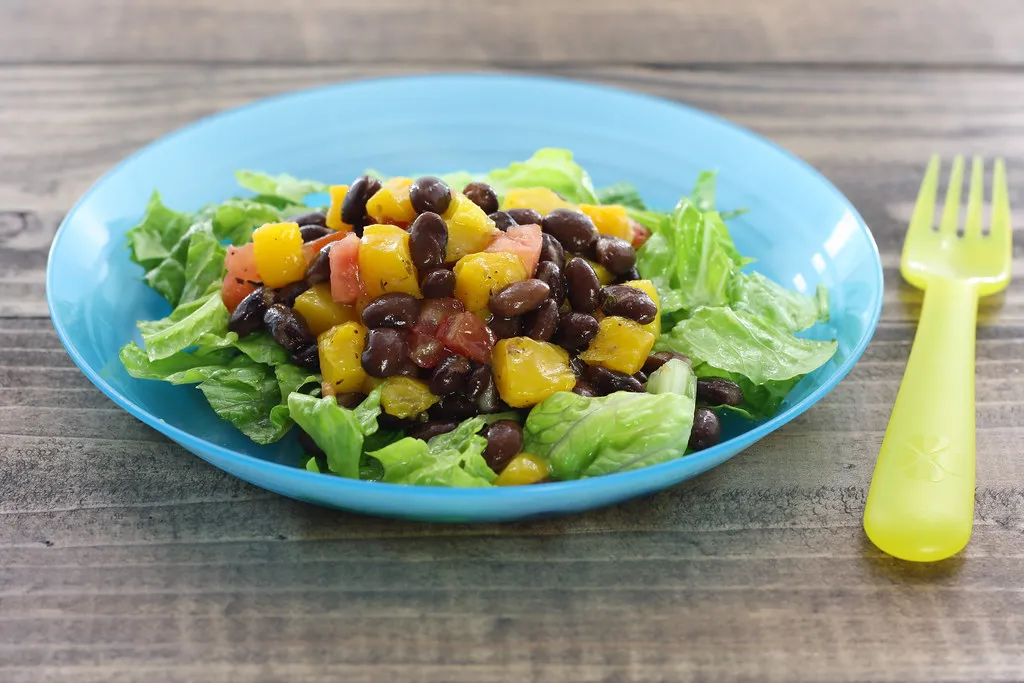
1. How to Store Bean Salad for Maximum Freshness
Since bean salads are typically made with perishable ingredients like fresh vegetables, herbs, and dressings, they require proper storage to prevent spoilage.
Best Storage Containers
- Airtight Containers – Prevents moisture loss and keeps the salad fresh longer. Choose glass or BPA-free plastic containers with secure lids.
- Mason Jars – Ideal for meal prep, as they keep ingredients layered and prevent sogginess.
- Bowl with Plastic Wrap or Silicone Lids – Works well for short-term storage but may not be as airtight as a sealed container.
Refrigeration Guidelines
- Store your bean salad in the refrigerator at or below 40°F (4°C) to maintain freshness.
- Most bean salads stay fresh for 3 to 5 days when stored properly.
- Keep dressings separate if you plan to store the salad for more than a day to prevent excess moisture buildup.
How to Prevent Sogginess
- Pat vegetables dry before adding them to your salad to reduce excess moisture.
- Use heartier greens like kale or cabbage if adding leafy components—they hold up better than delicate greens like spinach.
- Add dressing just before serving if storing for multiple days to keep textures crisp.
2. Can You Freeze Bean Salad?
Freezing bean salad isn’t always the best option, as certain ingredients (like tomatoes, cucumbers, and fresh herbs) lose their texture when thawed. However, if you want to freeze a basic bean salad (without delicate vegetables and dairy-based dressings), here’s how:
Best Practices for Freezing Bean Salad
- Use freezer-safe bags or containers – Remove excess air to prevent freezer burn.
- Freeze in portions – This allows for easy defrosting without thawing the entire batch.
- Label with date – Bean salads can be frozen for up to 3 months.
How to Thaw and Refresh Frozen Bean Salad
- Thaw in the refrigerator overnight rather than at room temperature to prevent bacterial growth.
- Drain excess liquid that may accumulate from freezing.
- Refresh the salad by adding fresh herbs, a splash of lemon juice, or a drizzle of dressing to restore flavor.
3. The Best Ways to Serve Bean Salad
Bean salads are incredibly versatile and can be served in many ways depending on the occasion. Whether you’re preparing a casual lunch, a picnic side dish, or a main course, here are some ideas to make your bean salad shine.
Serving Bean Salad as a Side Dish
Bean salads make a nutritious and flavorful side dish for a variety of meals. Some perfect pairings include:
- Grilled meats (chicken, steak, or fish) – A hearty and protein-packed combination.
- Burgers and sandwiches – A healthy alternative to fries or chips.
- Barbecue and picnic spreads – A fresh and cooling side for grilled foods.
Turning Bean Salad into a Main Course
With a few additional ingredients, bean salad can become a filling, protein-rich meal:
- Serve over greens – Spoon your bean salad over a bed of arugula, spinach, or romaine lettuce for a more complete salad.
- Add a protein – Mix in grilled chicken, shrimp, tofu, or hard-boiled eggs for extra sustenance.
- Pair with grains – Serve with quinoa, brown rice, or farro to create a balanced meal.
- Wrap it up – Use a whole-grain tortilla or lettuce wraps for a portable, high-protein meal.
Serving Bean Salad at Room Temperature vs. Chilled
- Chilled bean salads – Great for summer picnics, potlucks, or refreshing side dishes. Refrigerate for at least 30 minutes before serving to allow flavors to meld.
- Room temperature bean salads – Allow to sit out for 15-20 minutes before serving to enhance flavors, especially if using olive oil-based dressings.
- Warm bean salads – Slightly heating the salad can enhance flavors, especially for Mediterranean or spiced bean salads. Try serving a warm black bean salad over roasted vegetables or grains.
4. Meal Prep Tips for Bean Salads
If you love meal prepping, bean salads are a fantastic option because they hold up well over several days. Here are a few tips to make them even more meal-prep-friendly:
Prepping Ingredients in Advance
- Chop veggies in advance, but store separately if they tend to release water (e.g., cucumbers, tomatoes).
- Make the dressing ahead of time, and store in a separate container to maintain freshness.
- Rinse and drain canned beans thoroughly before mixing them into your salad to remove excess sodium.
Layering for Freshness (Mason Jar Method)
For meal-prep salads in a jar, layering ingredients properly prevents sogginess:
- Dressing on the bottom
- Hard vegetables (bell peppers, carrots, cucumbers)
- Beans and grains
- Softer ingredients (tomatoes, avocado, cheese)
- Greens or herbs on top
When ready to eat, shake the jar to distribute the dressing evenly.
5. Keeping Bean Salad Fresh for Outdoor Gatherings
If you’re serving bean salad at a picnic, barbecue, or outdoor event, proper food safety is important to prevent spoilage.
Preventing Spoilage in Warm Weather
- Keep chilled until serving – Store in a cooler with ice packs if serving outside.
- Use an insulated serving dish – Helps keep the salad cold longer.
- Avoid leaving out for more than 2 hours (or 1 hour if temperatures are above 90°F/32°C).
- Use vinegar-based dressings – These hold up better in heat than creamy, dairy-based dressings.
Serving in an Appealing Way
- Garnish just before serving with fresh herbs, avocado, or crumbled cheese.
- Offer toppings separately so guests can customize their salad.
- Provide serving utensils to prevent contamination and keep ingredients evenly distributed.
